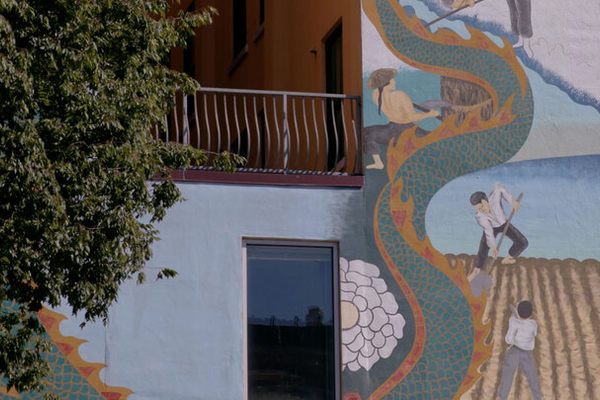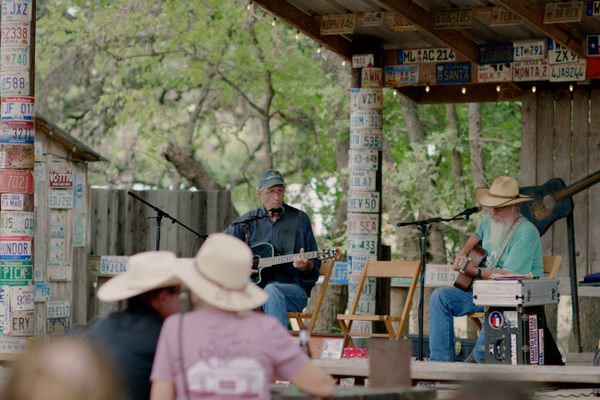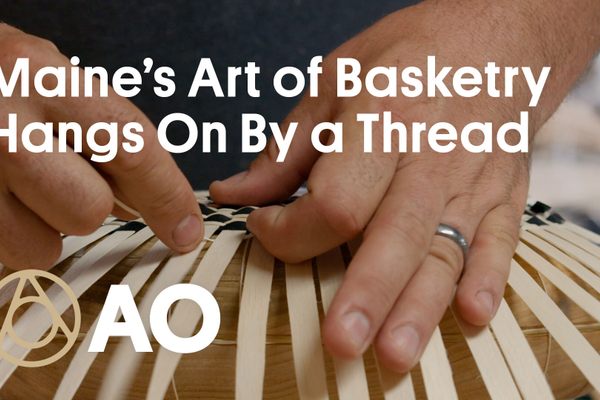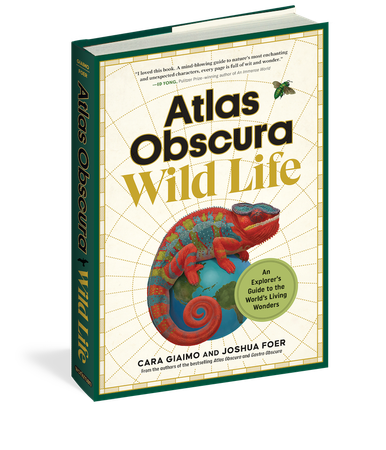Charlie’s Place Episode 4: Mr. Nobody From Nowhere
There’s much mystery surrounding Charlie Fitzgerald and who he was before Myrtle Beach. Before he was Charlie Fitzgerald he was Lucious Rucker. So who is Lucious Rucker?
Listen and subscribe on Apple Podcasts, Spotify, iHeart, and Amazon.
Rhym Guissé: A quick warning, some of the language and imagery used to describe this period of time may be upsetting. Please take care while listening. On my very first trip to Myrtle Beach, I wanted to orient myself with the place. Like a good tourist, I signed up for a trolley tour. And it happened to stop at Charlie’s Place. That was the first time I saw it. The club isn’t there anymore, but the house where Charlie and Sarah lived is. Inside the house is a kind of museum. There’s a replica of the bar, tables and chairs, a piano in the corner, a few photos, and something that completely shook my understanding of this story. There was a death certificate there, and the name on it was a name I had never heard before.
Dino Thompson: He was using another name, we found out, you know. Charlie Fitzgerald, his name was Lucious Rucker.
Rhym: Lucious Rucker, that was interesting. This was a shrine to Charlie Fitzgerald, but the death certificate says Lucious Rucker. Who is Lucious Rucker? Dino Thompson, that Greek kid who hung around Charlie’s Place, only ever knew him as Charlie.
Dino: Why did he change his name? That was mysterious. That was interesting. You know, I didn’t know anybody that changed their name except my dad. He changed it because his Greek name was so long it ran off of his army name tag.
Rhym: I wanted to figure out what was going on with this name change, so I asked everybody I could. But most people I talked to who knew the Fitzgeralds hadn’t heard of Lucious Rucker. Did you know that Charlie Fitzgerald wasn’t his real name?
Clyde “Frankie” Foster: That’s all we knew, was Charlie Fitzgerald.
Rhym: Yeah, his real name was Lucious Rucker. Yeah.
Clyde: Lucious Rucker?
Rhym: Before I saw the death certificate, I thought Charlie and Sarah were just very benevolent, well-off people, and they made their money being entrepreneurs. But clearly, they had a past. Charlie did, and it started with Lucious Rucker.
Bobby Donaldson: How does Lucious Rucker become Charlie Fitzgerald? And then how does this enterprising Black man, born at the turn of the 20th century, born at the turn of the 20th century, find his roots in Myrtle Beach, South Carolina?
Rhym: It sounded like more than a name change. It sounded like a reinvention. Did Charlie bury his past on purpose? Was there something he wanted to hide? This is Charlie’s Place. I’m Rhym Guissé. Episode 4: Mr. Nobody from Nowhere.
This is an edited transcript of the Atlas Obscura Podcast: a celebration of the world’s strange, incredible, and wondrous places. Find the show on Apple Podcasts, Spotify, and all major podcast apps.

Rhym: My dad always used to tell me, never forget where you come from. By the time I was in high school, we’d already moved to four different countries. Algeria to Mali, Mali to the Ivory Coast, Ivory Coast to America. My dad, a highly educated mathematician, had a hard time finding work. And he saw an opportunity in Baton Rouge, Louisiana, a place with a francophone past. He thought maybe that would make things easier. But he really had no clue.
Now, my family never fully bought into the idea of the American dream. But when I moved to the American South, I felt it being sold to me—hard. And while I was weary of it, I couldn’t help but notice that social mobility seemed more possible here than in any place I’d lived before. It was that mix of hope and disillusionment that drew me to F. Scott Fitzgerald’s The Great Gatsby. This was one of the first books I read in English when I moved to the States. And I loved it. And when I heard about the name change from Lucious Rucker to Charlie Fitzgerald, I immediately thought of Gatsby.
To refresh your memory: It’s a 1925 novel, and Jay Gatsby is this mysterious man who throws lavish parties on his Long Island mansion. Night after night, he hosts these parties, all to get the attention of a woman he loves named Daisy. But Daisy is already married to Tom. They’re old money, whereas Gatsby is new money. No one knows where Gatsby came from or how he made his fortune. It’s implied he’s built this whole persona. All the mystery and the way he bucks class norms makes Gatsby a threat to the old money families around him. Eventually, we learn Gatsby actually came from a poor farming family in North Dakota, German immigrants. And he was born James Gatz. He changed his name to Jay Gatsby. At a climactic moment, we learn it was bootlegging that made Gatsby rich. It’s Tom who calls Gatsby out. He uses Gatsby’s real past to diminish him in Daisy’s eyes. And he calls Gatsby a Mr. Nobody From Nowhere.
This moment really struck a chord, because this is the exact thing that holds immigrants back. The minute you step foot in this new place, you become a nobody from nowhere. Who you are is what you left behind, so you reinvent yourself.
No one I talked to knew about Charlie’s life before Myrtle Beach. Still, the matter of where Charlie came from came up a lot. What I thought was a basic and innocent question opened a can of worms every time. It became a central part of the mystery surrounding Charlie. Being an immigrant, I should have known better. “Where are you from?” is always a loaded question. Some said Charlie was from up north. Some said the islands, Trinidad. Some said he was from New York, on the run from the mob. This mystery elevated him in the eyes of the people on The Hill. It added to his folk hero status. The rumors swirling around Jay Gatsby also worked in his favor and turned him into a king.
Now, when it came to Charlie’s origins, no one mentioned any part of the American South. But there was one thing Herbert Reilly said about Charlie that really stuck with me. He was the amateur historian who passed away several years ago.
Herbert Riley: One thing about Charlie, he didn’t grow up down here. He never saw strange fruit hanging from the poplar trees. The Black men that grew up down here in the country in the 20s, it was nothing unusual for them to, at least once in their lifetime, to see somebody hanging from a tree. That puts fear in you. That was the purpose of it. This is terrorism. There’s no terrorism like white supremacist terrorism. Let me tell you.
Rhym: If Charlie didn’t grow up in the South, maybe that’s why he was so bold. But was this true? There was something on that Charlie tour that led me to an answer. It was on that death certificate hanging in the Fitzgerald’s house-turned-museum. Lucious Rucker. Because according to the death certificate, Lucious Rucker was born in Toccoa, Georgia. And if Charlie was Lucious Rucker, he almost certainly was from the South. This brought the picture into focus. I wanted to talk to a historian who understood South Carolina history deeply and the unique circumstances that would have shaped Charlie’s life and the choices he made. That person turned out to be Dr. Bobby Donaldson at the University of South Carolina.
Bobby Donaldson: So for the last 25 years, I’ve done a number of oral interviews of South Carolinians about race relations and civil rights. And one thing I’ve learned is how much people have forgotten unless prompted, unless there is a unique moment that I can pull from an archival record or photograph about the past. However, once that rewind button is pressed, it is amazing the volumes of information about the history of our state, about our nation, that are buried in the layers of people’s minds. I was interviewing a gentleman about his participation in student demonstrations in 1960. He stopped me and he said, “You know, I’m from Conway, South Carolina. Have you ever heard of Charlie Fitzgerald?” And I had not. And he then began to give me a dissertation on Charlie Fitzgerald and what he remembered happening in 1950. And he said the police dogs, tear gas he experienced as a college student was nothing compared to the fear and terror he remembered as a little boy growing up in Conway, not too far from Myrtle Beach.
Rhym: Dr. Donaldson went deep into the archives. He pulled documents and old interviews he had done for his research. By the time we talked, he knew a lot about Charlie Fitzgerald.
Bobby: There’s a document that caught my eye late last night—I think it was his World War II registration—that there was a sister who lived in Myrtle Beach. I did not know that. And so I’m curious if her presence there may have been what drew him to the community. And it looked like from some of the public records that his sister was a nurse in Horry County.
Rhym: A sister in Myrtle Beach? Charlie is a person I was told had no known family. Obviously, he came from somewhere, but I didn’t expect to find links to any relatives, let alone a sister; in Myrtle Beach? It turns out there’s a trove of documents about Charlie Fitzgerald’s life. Census reports, draft cards, newspaper clippings. I was surprised to find so much on a man who seemed like he tried hard to not be known. Here’s what we know about Charlie on paper—or rather, Lucious Rucker. Lucious was born in Toccoa, Georgia on August 31st, 1900. He was the youngest and only son of Nollie and Effie Rucker. Nollie was a brakeman for the railroad. Effie was a teacher. One census report says Effie’s father was from Ireland, and the whole family was identified as “mulatto.” This might give a little insight into the lighter shade of Charlie’s skin. And I learned Lucious had two older sisters: Annette and Ethel. And when he was a teenager, the family moved from Georgia to Greenville, South Carolina.
Bobby: This is all making more sense now. Greenville is one of the emerging big cities not too far from that part of Georgia. So it’s not too surprising that his path takes him from his rural town to Greenville and then to other parts of the state.
Rhym: Professor Donaldson says he thinks a lot of Black families traveled the same path to the nearby big city. And that’s where Charlie spent all of his 20s, as far as I can tell: in Greenville, where he worked several jobs.
Bobby: He was the janitor of an Elks Lodge.
Rhym: And a cook. He also compressed cotton. He worked that job into his 30s. So Charlie would have been coming of age exactly against that backdrop of the terrorism Herbert described. White lynch mobs. The KKK burning crosses on people’s lawns. This is what went on in the 1930s in Greenville, South Carolina.
Bobby: And here is where African Americans are coming of age, trying to figure out what is the best way to navigate through the brutality of racial violence and Jim Crow policy. But I also know that most Black people were not living day-to-day under this curse of bigotry and white supremacy. They knew it existed. They knew it was there. But here was people making a way out of no way.
Rhym: In other words, their lives were more than the oppression they faced. Charlie grew up during a time where the ideas about how to navigate the world as a Black person were coming from political activists and scholars. Civil rights giants like W.E.B. Du Bois …
Bobby: Who was the founder of the Niagara Movement and the NAACP.
Rhym: Marcus Garvey …
Bobby: Who leads the Back to Africa movement. A strong champion of Black nationalism and Black entrepreneurship and self-help.
Rhym: And Booker T. Washington …
Bobby: Who championed entrepreneurship and self-help. And what some have described as racial accommodation.
Rhym: Accommodation rather than resistance tactics like protest. He said, “Do not agitate. Rather, work with your hands. Prove useful. And this will erode racial barriers.” Du Bois and others criticized Washington for promoting this approach rather than actively fighting to end discrimination. They didn’t all agree. But these men all stressed Black entrepreneurship. Although they had different ideas about the limitations of racism. What W.E.B. Du Bois referred to as “The Problem of the Color Line.” And they had different ideas of how to grapple with it. Do you ignore it? Work within it? Accommodate the racists? Push back? Or leave?
Bobby: So Charlie Fitzgerald is hearing options. Here are people building their own lives. Here are people establishing their own businesses. Establishing their own businesses. Their own neighborhoods. Their own communities. Their own churches. Their own schools. Living within the color line. So that’s the era in which Charlie Fitzgerald is building his business. That is the era in which he is trying to navigate a path forward.
Rhym: This is also the era when people in South Carolina become aware of a soldier named Isaac Woodard. In 1946, Charlie was in his 40s and running his nightclub in Myrtle Beach. That year, this soldier Isaac Woodard was returning home from war. He was just 26 years old and hopped on a Greyhound bus to Winnsboro, South Carolina. Along the route, he asked the bus driver to pull over so he could use the restroom. The bus driver refused. They argued about it. And at the next stop, policemen pulled Woodard off the bus, beat him in an alley, and threw him in jail.
Bobby: This gentleman is honorably discharged from the military, and on the very same day he is discharged, he is brutally beaten by local police in a community called Batesburg, South Carolina. Beaten and blinded.
Rhym: The officer who blinded Woodard later stated in court that he beat him for saying “yes” instead of “yes, sir.”
Bobby: And this becomes a national story because here is Isaac Woodard who becomes a symbol of white supremacy, a symbol of racial violence, but also a symbol of Black resistance.
Rhym: Isaac Woodard was just one example of the aftermath of war because in the South, Herbert Riley says, there’s something that always happened after war.
Herbert: This caused Klan fever to rise. Klan rises after every war. You know, you have the greatest Klan parade ever in 1920. That’s right after Black troops came back from World War I.
Rhym: Charlie lived through two world wars. And when the second one ended, the cycle began again. The Ku Klux Klan rose again.
Herbert: Because they were mad because Blacks were just coming back from World War II and Black men felt strong, entitled. They had given their lives. And see, a lot of these Southern boys had to be in the same foxhole of Black people who were saving their lives many times. So, although they wouldn’t just embrace it, they knew the truth in their heart.
Rhym: Black soldiers are hopeful they’ll come home to greater respect and fair treatment. But that doesn’t happen.
Bobby: Black men in uniform are not lifted up as heroes. They are dismissed as threats.
Rhym: Somewhere along the way, Lucious Rucker becomes Charlie Fitzgerald. And as far as I know, he was going by Charlie Fitzgerald as early as 1940. And that’s what it says on the Moncks Corner, South Carolina Census. He was married to Sarah by then, and making a living selling beer and wine. Although locals say the Fitzgeralds opened the club in Myrtle Beach a few years earlier, in 1937. It’s a little unclear exactly when the Fitzgeralds made Myrtle Beach home.
Bobby: What surprises me most about Fitzgerald in the ’40s and ’50s: Many African Americans who aspired to do well, they had made the decision that that future was not in the American South. That it was obvious there was no room for ambition and aspiration. There was no room for Charlie Fitzgeralds. And so there were many Charlie Fitzgeralds who got on the migration train and found themselves in Washington, D.C. and Baltimore, New York, Boston, Philadelphia. But he cast his net right here in the South.
Rhym: Charlie never left the South, not really. In that way, he was a lot like Booker T. Washington. This man who was born into slavery, who decided to stay, who worked with white people, let the fruits of his labor do the talking. Washington’s strategy made him powerful. He had all sorts of connections with white politicians and some of the wealthiest Americans. President William McKinley celebrated Washington for being a Black leader who was not too “radical for whites.” President Theodore Roosevelt invited him to the White House and later called on Washington as a consultant on race-related issues. Booker T. Washington went far with this approach. He seemed to fit in places in the South where you’d never imagine Black people to be at the time. This was a lot like Charlie. And when Charlie moved to Myrtle Beach, he moved to Carver Street, into the Black neighborhood everyone knew as The Hill. But its official name is the Booker T. Washington neighborhood. As Dr. Donaldson points out though, Washington was criticized for being too accommodating at times because he chose not to resist, not to agitate, to labor away and remain palatable to white people. I don’t think anyone would describe Charlie as accommodating, but to stay in the South when others traveled north, which honestly seemed like a safer and more forgiving path. What did it take to stay? And how did Charlie make the leap from working in a cotton mill in Greenville to opening a successful nightclub in Myrtle Beach? How did he pull that off?
Bobby: Fitzgerald is influential, powerful, but he was notorious. That’s a good adjective for him. Here was a guy who made his money in gambling, in alcohol, in amusement. And there are newspaper accounts where he is arrested at various times for violating local ordinances. I remember seeing one in the ’40s in North Carolina. So he was a roving entrepreneur who was beloved and respected by some and despised and ridiculed by others.
Rhym: There are so many rumors swirling around Charlie, and they all point to a central theme: Charlie lived on the edge of danger. There was the gambling, paying off the police to bootleg. A lot of people talked about that. And there were other things, like frequent trips to New York.
Leroy Brunson: He’d go to New York about once a month, he would go to New York. And we thought maybe Charlie was, you know, with the big boys, you know, I’m not saying that he was.
Rhym: What was Charlie doing in New York? Did he have ties to the mob? Did this have something to do with why he changed his name? Was Charlie in trouble? Or could the name change be about something more personal, a different kind of hiding? Ms. Pat told me that Charlie had affairs.
Patricia Burgess: But Charlie had a lady working for him, had a baby for him, and Ms. Sarah got the baby and adopted. You know how the dirty girls go with these married men.
Rhym: And I’m so shocked that Ms. Sarah adopted him.
Patricia: Well, she had to keep her husband. We never would dream of going through this mess like that.
Rhym: Charlie had a son, and his name was Nathaniel Rucker. If he had a son and gave him his original last name, then how much was he really trying to hide it? Nathaniel died decades before I came to Myrtle Beach. But as I was talking to people on The Hill, they began to tell me about another son, also from an affair. A son who was still alive in Myrtle Beach, named Ronnie. Unlike Nathaniel, Ronnie wasn’t raised by the Fitzgeralds. Neighbors told me that Ronnie always had questions about his dad, about Charlie. Even to him, Charlie was something of a mystery. Before I could decide how to reach out to Ronnie, he passed away.
Trying to get to the bottom of Charlie was a lot of guesswork, blind reaches into the murky past. In the end, I’d never find a satisfying answer as to why he changed his name. It’s tempting to draw the conclusion that Charlie was running from something. Maybe he was, I don’t know. But what I really think is: Charlie wasn’t running. He was creating. He was inventing a new image for himself. Or rather, Lucious Rucker was looking for a name. One that matched the sophistication he wanted to embody as an entrepreneur. Maybe it helped him pass in white society when he needed to.
I believe choosing the name Charlie Fitzgerald was about creating a new identity for himself. To become something bigger than anyone ever expected him to be. Regardless of his name, Lucious Rucker, or Charlie Fitzgerald, needed audacity to bootleg as a Black man back then, when a misinterpreted glance could incite mob violence. When you could be blinded for responding with a “yes,” instead of a “yes sir.” If he did do it, it was hard to picture how Charlie got away with it. Maybe he was really well-liked or, like Booker T. Washington, useful to someone who could protect him.
Bobby: There is a whole big question that Charlie Fitzgerald, who had clubs, and hotels, and dance halls, could not have been successful unless he had white champions or white supporters. And I think that’s some space to really investigate—that Charlie had some level of advocacy among the leadership of Myrtle Beach. And one of the probably clearest examples of that is the county sheriff, Sasser, who comes to his aid and comes to his defense. Why that is, I don’t know. I’m very curious.
Rhym: And there would come a time when Sheriff Sasser would save Charlie. We’ll get to that. All through the 1940s, Charlie built up businesses. The popular club with a roster of musicians. A cab company. A restaurant. A hotel. The gambling game in the backroom. Money in white businesses downtown. Maybe another club on Atlantic Beach. This was a powerful man. But by the late 1940s, there was a storm brewing. And the first lightning strike came in 1948 in another part of South Carolina. You could trace it to a man named George Elmore. Definitely a Charlie Fitzgerald type. A light-skinned entrepreneur 150 miles away.
Bobby: George Elmore owned a grocery store. George Elmore owned a liquor store. George Elmore had a taxi service. George Elmore had a photography business. And George Elmore was the secretary of the Progressive Democratic Party that sought to give African Americans a political voice when they were actually being excluded from the white Democratic Party.
Rhym: And one of those ways Black people were obviously excluded was they weren’t allowed to vote. George Elmore sought to change that.
Bobby: And so George Elmore, a fair-skinned gentleman, is ultimately able to get his name on the voting roster.
Rhym: At first, the clerk thought Elmore was white. So that’s how he was registered. And then they found out he was Black.
Bobby: And they said, you and your people cannot vote. And George Elmore takes that moment, files a lawsuit that is ultimately ruled in his favor called Elmore v. Rice, where a federal judge rules it unconstitutional for Black people to be denied the right to vote in the Democratic Party.
Rhym: For the first time, Black people would be allowed to vote in South Carolina. They would be allowed to vote in the 1948 Democratic primary, all because of George Elmore. And this meant Charlie and Sarah Fitzgerald would have a decision to make. Early on when I began my research, I read a book recommended to me by someone at the local historical society. It’s a brief history of Myrtle Beach from 1900 to 1980 by Barbara F. Stokes. I found something in there that surprised me. In Myrtle Beach, there were only two Black people who registered to vote in the 1948 primary: Charlie and Sarah Fitzgerald.
Herbert: Not another Black over here would register. Charlie offered to put up money for them if they needed it, whatever. Not a one.
Rhym: Now this was a very big deal. To be the first was to take a stand and to be visible. This decision would be documented for all to see, specifically for racist white people to see.
Bobby: And almost immediately, he comes under fire. He comes under attack and ultimately withdraws his name from the registration book.
Rhym: Charlie asked the mayor to scratch their names off the roll. And he told a newspaper reporter, “I don’t think this is the right time to put our names on the book.” The news article quotes Charlie as saying that Blacks and whites in Myrtle Beach get along and will continue to do so if, “cheap politicians and outside agitators leave us alone.”
Bobby: And that was a story because everyone knew Charlie. And if Charlie’s intimidated and threatened at this moment by simply doing what? By simply wanting to exercise the right to vote, then we would know clearly what that terror meant for other people. And I should say too, because Charlie and Sarah withdraw their names, they come under criticism by Black leadership for doing so. Here you have these very powerful, independently wealthy citizens. And if they are going to withdraw their names, then so would the sharecropper. So would the chauffeur. So would the maid. And I think there was a concern that if the Fitzgeralds were to withdraw their names, the dominoes would fall. And the very momentum you hoped you would achieve would be lost. Now, that did not happen, by the way.
Rhym: Charlie and Sarah retreated. But a lot of other people outside of Myrtle Beach didn’t. About 30,000 Black people in South Carolina voted in that 1948 primary.
Bobby: In 1948, Black people vote in record numbers and have a tremendous influence in state politics.
Rhym: In the lead-up to the 1948 presidential election, a new party forms: the Dixiecrats. It’s made up of a group of white Southern Democrats and segregationists who oppose Truman’s civil rights agenda. The Dixiecrats choose Strom Thurmond to lead. He’s the governor of South Carolina at the time.
Bobby: In his acceptance speech, he makes a powerful line where he says there are not enough armies in this country that would force white people to share a swimming pool and a theater with Black people. His words are far more racist than that. That becomes not only a mantra, that becomes marching orders that the governor of South Carolina would make a clear declaration that white supremacy is actually policy and that it will shape and guide the state of South Carolina. And even though Thurmond himself comes out against the Klan, his very rhetoric provides some fuel for the Klan.
Rhym: Strom Thurmond, of course, does not become president. But in 1950, he runs for Senate. He goes head-to-head with Olin Johnston, and the rhetoric becomes louder and more racist.
Bobby: And essentially, what shaped the campaign was who was the most racist of the two.
Rhym: It becomes a fight to show who loves segregation more, because that’s what it was going to take to win in South Carolina. Like Charlie, the light-skinned entrepreneur George Elmore, who registered to vote, becomes a folk hero. But that’s a dangerous path to follow. George Elmore put himself on the line, and he would become a target. In the late 1940s, the Klan would come to George Elmore’s house, burn a cross in his yard, and threaten his family. This victory, for tens of thousands of Black people turning out to vote, would cost Elmore a lot.
Bobby: George Elmore loses his store. George Elmore loses his other businesses.
Rhym: State agents raid Elmore’s liquor store. Banks call in loans on their home. He’s forced into bankruptcy.
Bobby: George Elmore is evicted from his house. George Elmore’s wife is placed in a mental institution. His children are taken away from him.
Rhym: George Elmore becomes the victim of racism. So what would happen to Charlie?
Bobby: Here are these teenagers and college students, young people, Black and white, gathering in the night at Charlie’s place, integrating, dancing, socializing, drinking. One of the worst fears that was preached in pulpits, that was put in newspapers and in campaign literature, was that if the Civil Rights agenda goes forward, it’s going to lead to the mongrelization of the races. It’s going to lead to the demise of white people, and it’s going to lead to scenarios where the fair maidens of white women is compromised, is abused, is exploited by Black men. And in the minds of many, Charlie Fitzgerald’s dance hall becomes the worst fears of the champions of white supremacy.
Rhym: When you read The Great Gatsby, the whole thing feels like this simmering electric increase in tension. It builds and builds. You sense something very bad is going to happen, like something’s got to give. Something bad does happen. Gatsby loses Daisy, but when she accidentally kills someone with Gatsby’s car, he takes the blame. He sacrifices himself for her. But love is not enough to overcome the class dynamics, and neither is money. A man who wants revenge for the car accident finds Gatsby at his mansion and shoots him. It ends with the image of Gatsby lying face down, dead, floating in his pool. August 26th of 1950 is the night the tensions in Charlie’s life would come to a head. It’s a night that everyone on Carver Street, everyone on The Hill, everyone who is alive and there remembers well. On that night, Ms. Pat was at her granddad’s barbershop on 21st Street on The Hill.
Patricia: My granddad was sitting in his shop yard, burning fire, burning trash. He used to burn trash every night.
Rhym: Ms. Pat’s granddad was out there when the chief of police, Carlisle Newton, came by. He came to deliver a warning. He said, “Stay put and no one is going to bother you.” Ms. Pat’s granddad told them all to go inside and shut out the lights.
Patricia: He said, “If I get killed, y’all pray.”
Rhym: Her granddad had them pray for everything, but they never had to pray for anything like this before. He said, do not turn on the lights until I come get you.
Patricia: And that’s all he told us to do. And every light on that corner of 21st was out. And my aunt was scared. My aunt was in there crying and shaking her baby, keeping her baby from crying and nobody said a thing.
Rhym: Ms. Pat’s granddad posted up in the front yard. They waited in the dark house and listened for gunshots.
Patricia: And he had a big fire in the front yard, in the front of his shop, with a shotgun across his lap. And granddad would sit there and burn that fire and the next thing we’d know, Charlie was gone. Charlie was gone.
Rhym: Next time on Charlie’s Place …
Leroy: Don’t take anything for granted. You just don’t, you don’t know when it’s going to happen, how it’s going to happen, who’s going to do it to you.
Betty Singleton: She said, they’re riding, and when they say they’re riding, that mean the KKK was riding.
Listen and subscribe on Apple Podcasts, Spotify, iHeart, and Amazon.
Charlie’s Place is a production of Atlas Obscura and Rococo Punch, in partnership with Pushkin Industries and presented by Visit Myrtle Beach. It’s written and produced by Emily Forman. Our story editor is Erika Lantz. Our team at Atlas Obscura is Doug Baldinger, Chris Naka, Johanna Mayer, Linda Llobell, and Emily Yates.
Sponsored by Visit Myrtle Beach.













Follow us on Twitter to get the latest on the world's hidden wonders.
Like us on Facebook to get the latest on the world's hidden wonders.
Follow us on Twitter Like us on Facebook